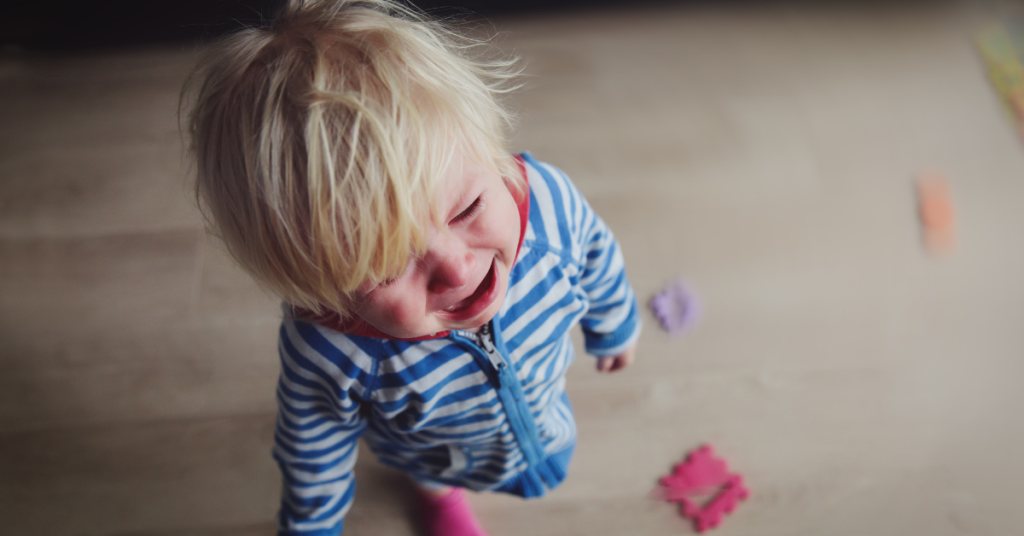Handling tantrums and emotional outbursts is one of the biggest parenting challenges. It’s something that makes the whole parenting thing really hard.
However, if we equip ourselves with the right tools and use them every time our children have a hard time, it all gets less messy. In fact, both parents and children grow together.
One of the books that totally changed the way I manage my kids’ tantrums, meltdowns and any other expressions of their big feelings is The Whole-Brain Child by Dr Dan Siegel and Dr Tina Payne-Bryson (check out our notes).
The strategy which I found particularly helpful for meltdowns is “Engage, don’t enrage”. It is not only a life-saver in a moment of an emotional explosion. I know it’s also helping my kids develop important skills they will need to thrive later in life.
This tool works.
And here is my story.
How to handle a temper tantrum like a pro – “Engage, don’t Enrage” strategy in action.
On a lovely Saturday morning, we went to a playground with our three boys. By the time we’ve got there, I realised that we had forgotten their water bottles at home. Having no water is a problem. Stepping by a convenience store is a solution. Easy-peasy.
Everyone had a fantastic time and left the playground in good spirits. When boys jumped on their scooters and zoomed back home, I threw the empty water bottles into the bin.
How. Dare. I. Was.
As we were approaching home, our 4-year-old has started losing it. By the doors, he had a complete meltdown.
“LET’S GOOOOO!” He yelled through tears, pulling my hand.
OMG. His right brain got disconnected from his left brain. His amygdala just hijacked his upper brain. He got totally dysregulated. That’s a huge emotional wave, and it can turn into a tsunami within seconds. How can I help?
I took a deep breath (“keep calm and carry on” is my mantra these days) and rushed through my thoughts, trying to find a quick solution.
Option 1 (autopilot).
Just drag him home. Lock the door. Tell him that the playground time is over, and he can scream as much as he wants, but we are not going back. Maybe, add something about the lunchtime.
Outcome – I’ll ignore his emotions and probably will not help him learn how to manage big feelings. And I am more likely to lose it with him. The rest of the day might be spoiled for everyone.
Option 2 (mindful / positive parenting style).
Try the “Engage, don’t enrage” strategy from “The Whole-Brain Child” as a solution. Here is how it works:
Step 1: connect with the right – I appeal to my son’s right brain by acknowledging his feelings. I can use nonverbal signals like physical touch, empathetic facial expression, nurturing tone of voice and nonjudgmental listening.
Step 2: redirect with the left – once he “feels felt”, I can redirect with the left brain through logical explanation and planning, so his left hemisphere would join the conversation.
Step 3: engage his upper brain by asking what’s happening and if a problem caused his anger. I can then ask him for a solution to the problem.
Outcome – I’ll give him an opportunity to practice self-regulation and problem-solving.
That’s probably the best. Let’s try.
One more deep breath.
“Oh sweetie, you look really upset!” I said calmly. “I understand…you had so much fun at the playground, and now it’s time to go back home. Is it right? I would feel really upset too!”
I gave him a hug trying to connect. And to keep my cool (that’s the hardest thing for me, I must acknowledge).
“NOOOOO! I WANT WATER!!!! THE ONE WE BOUGHT IN THE STORE! I SAW HOW YOU THREW THE BOTTLE INTO THE BIN!!!!”
Of course. It all makes sense now ☺ I continued by letting him “feel felt”:
“Oh…I can see now – you are really mad that I threw the empty bottle away! And that was the one you’ve chosen in the store! Oh, dear. It all makes sense now! I’m so sorry I did that! I didn’t realise you wanted it! I would be really upset if someone did this to my water bottle…”
My son (sobbing): “Let’s go back and get it from the bin! I want to drink water.”
Yuck.
Me (trying to redirect to his left brain):
“Sweetheart, that might be a challenge as that bin is all dirty and full of rubbish. And the bottle is probably at the very bottom now – I don’t want to take it out.
So. We have a problem – the bottle is in the rubbish bin, and you want to drink water…hm… let’s find a solution together? Why don’t we do a “Snake Breath” 3 times and play a “what if?” game like Stinky and Dirty?”
We did the snake breath together and started brainstorming. Here are a couple of solutions Alex came up with:
- Get a digger to take the bottle out;
- Turn the bin upside down so all the rubbish would fell to the ground and he could easily get the bottle without putting his hands into it;
- Get on a helicopter and take the bottle out of the bin with a hook (like Ms Rabbit in Peppa Pig).
Then we discussed the pros and cons of every solution. Within 5 minutes, we were both laughing, coming up with more silly options.
“Why don’t we just go home and you drink water from your favourite blue bottle with sharks?”
“OK, mommy. Let’s do that!”
Phew. Success! That wasn’t that difficult.
Thanks, Dr Siegel and Dr Payne-Bryson ☺
P.S.: Check out the book for more strategies – it’s one of the best parenting books ever.
Loads of love,
Irina



